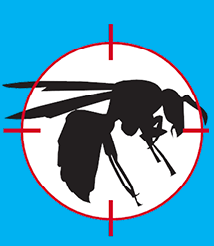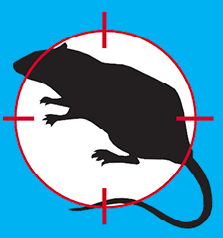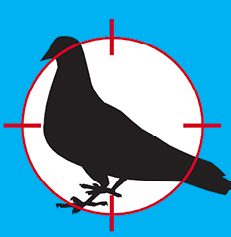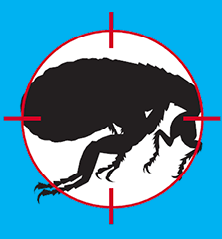Whether you’re dealing with a wasp nest at home or within your business premises, a wasp infestation poses a range of serious concerns, from painful stings to the risk of allergic reactions and property damage.
It’s vital to act fast if you suspect wasps have invaded your property.
Call us for a quote on 01245 491 327 or Contact Us
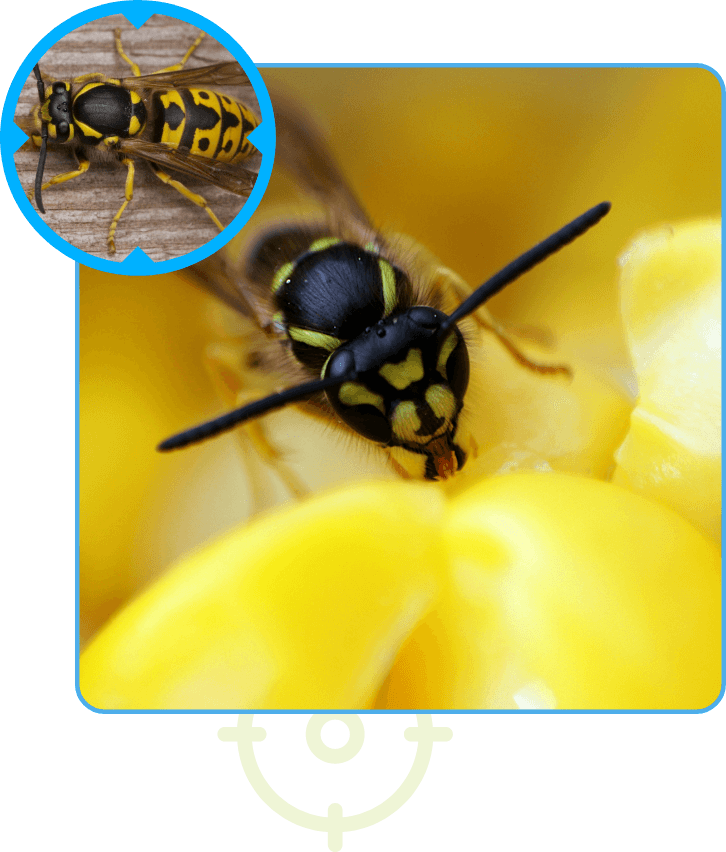
Our process
We provide a rapid and efficient wasp nest removal service for residential properties and businesses throughout Essex. We guarantee a fast and friendly service with a same-day response, including multi-site contracts and regular prevention and maintenance visits.
Before commencement of any treatment, we will first undertake a no-obligation survey to determine the nature of potential issues, and recommend treatment and prevention measures. On arrival, our pest technician will carry out an assessment to locate the wasp nest and will discuss the recommended treatment before proceeding.
We are always considerate of pets and children, taking necessary steps to ensure any treatments are carried out safely. Please advise our residential pest control staff if you have any concerns. They will be pleased to answer any questions you may have regarding the proposed treatment.
Our commercial pest control technicians understand the need for discretion and all of our vehicles are unmarked to ensure privacy is maintained.
Upon completion, our pest technician will provide a detailed treatment report, together with details of any additional treatments that are required.
Our Wasp nest treatment
A mature wasp nest, typically found in the summer months, almost always requires professional treatment due to the high risk of wasp stings. By this stage, a nest can house thousands of wasps.
At Wildthings, we provide a comprehensive range of wasp control solutions. Our technicians are skilled in identifying specific wasp species. Each treatment is customised based on the wasp nest’s location. We also offer expert advice to help prevent future wasp infestations.
The most common treatment method we use is an insecticide dust, which is delivered via high-pressure sprayers and lances. This method is used when immediate wasp nest removal is essential due to the risk posed to people. Examples include wasp nests located near footpaths, playing fields, school grounds, or parks. During the removal process, our technicians wear bee suits, veils, and full-face masks to protect themselves from stings and to prevent inhalation of pesticides or contact with the spray in their eyes.
For your peace of mind, we can return to remove the nest from your property after a minimum of 48 hours, allowing for complete treatment of the entire wasp nest. However, this will be the last resort and may not be possible if it is located within an enclosed area.
If you prefer to remove the nest yourself, it is advisable to wait until late autumn or winter when the nest is less active. Be sure to wear protective clothing, as the treatment may still be active within the nest.
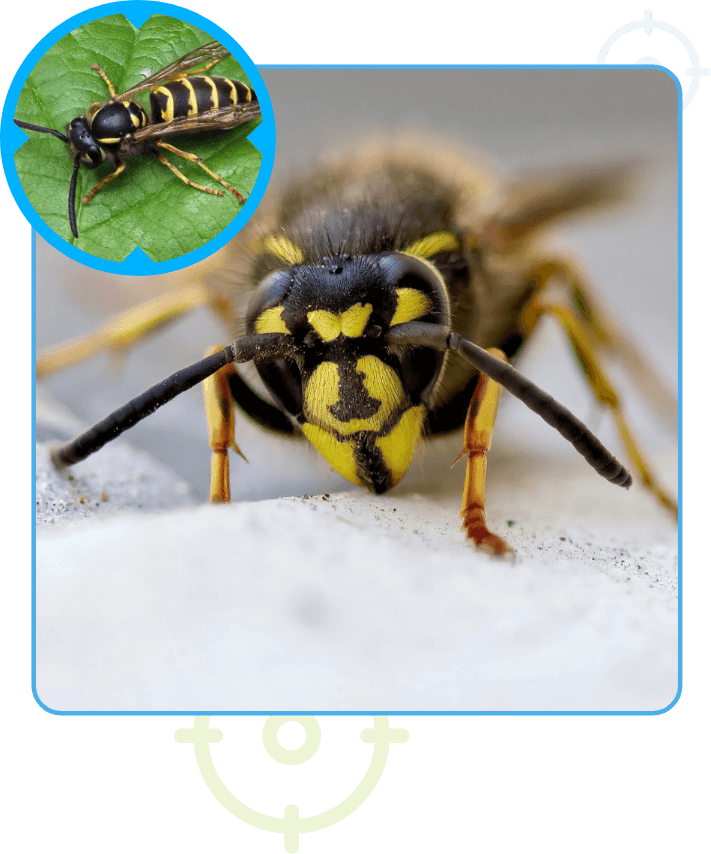
About wasps
The UK has 2 species of wasps, the Vespula vulgaris and the Vespula germanica. V. germanica tends to be more bad tempered than V. vulgaris. These two species of common wasp are practically identical but you can tell them apart by their facial and thorax markings. Both species have a single queen who produces 6,000 to 10,000 workers.
There is also a European hornet that can be found in the UK, Vespa crabro. Known for making intricate paper-like nests out of surrounding plant materials and other fibers. This species stings in response to being stepped on or grabbed, but generally avoids conflict. It is also defensive of its nest and can be aggressive around food sources
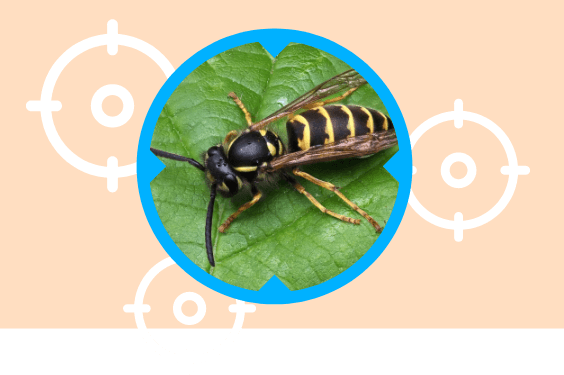
Vespula vulgaris
The Vespula Vulgaris. About 2 cm long, they have bright yellow and black bands along the body, with an obvious ‘waist’ between the thorax and abdomen. They also have two pairs of wings and fairly long, robust antennae. The sting is located at the tip of the abdomen. The queens (reproductive females) are larger than workers (non-reproductive females).
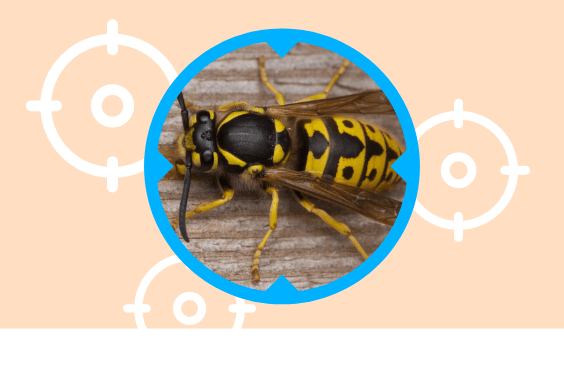
Vespula germanica
The Vespula germanica. Very similar in appearance to the Common Wasp, though very slightly bigger. The best way of telling them apart is by looking at the face - there are usually three small black spots (rarely one). The top spot may be merged into a vertical bar. It is never anchor-shaped as it is in case of the Common Wasp. The antennae are black right down at the base. The thoracic stripes usually bulge in the middle and there are four yellow spots at the rear of the thorax.
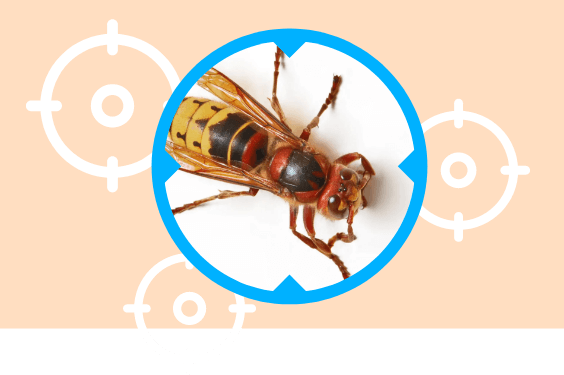
Vespa crabro
Size 25 to 35 mm. The hornet is an impressive insect and is Britain’s largest social wasp. Queens (reproductive females) are larger than the males and workers (non-reproductive females). The thorax area is brown and it has alternating bright orange-yellow and brownish-black stripes along the abdomen.
Wasp Facts
- Wasp stings can be painful and, in rare cases, cause anaphylactic shock, potentially leading to cardiac arrest.
- When a wasp dies, it lets out a pheromone in the air which acts as a warning to other wasps. So be wary if you kill one, as you may find yourself attacked by others who have come to the aid of their fallen comrade.
- Wasps eat nectar, fallen fruit, carrion, and other insects, helping pollinate plants and control pests.
- Wasps carry out all their activities during the day and always return to the nest at night. During the year, wasps are most likely to bother you towards the end of the summer, when the lifecycle of the nest begins to die out. They start to attack humans when their diet changes to carbohydrates.
- The lifespan of a worker wasp is 12-22 days, while a queen can live up to a year.
- Wasps can also be very social creatures and will build colonies based on how well they mate. Since the purpose of a wasp’s life is to mate and/or create offspring, unmated wasps will eventually die off.
How do I know if I have a wasp problem?
There are several signs that point to wasps making their home within yours. It’s important to flag a problem quickly, so that the removal is easier and so there are less wasps around your home.
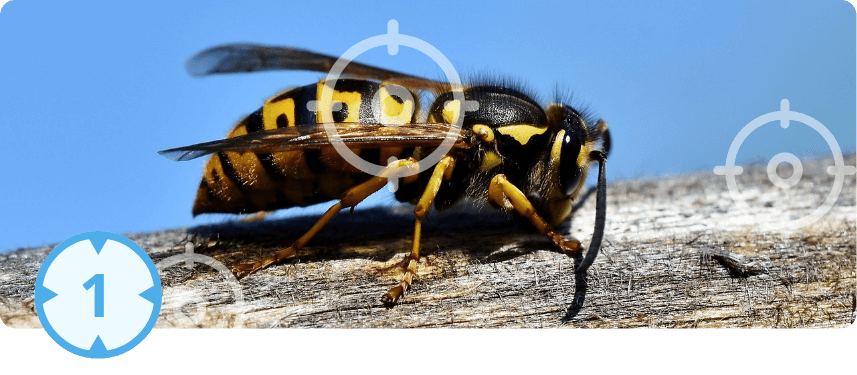
Seeing wasps in or around your property
Whether they’re congregating in one spot or showing up inside your home, can be a clear sign of their presence. You might not see the wasps themselves, but you could be alerted by the loud buzzing noise they make.
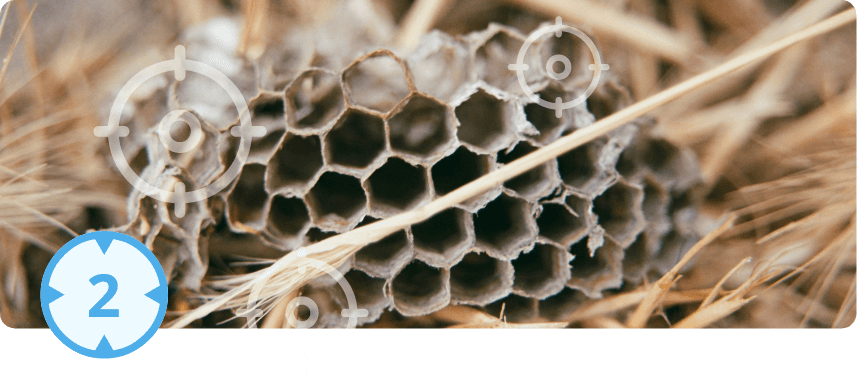
Noticing evidence of chewed materials
Wasps build their nests by using chewed paper or wood, so any signs of holes or chewing could indicate their presence.
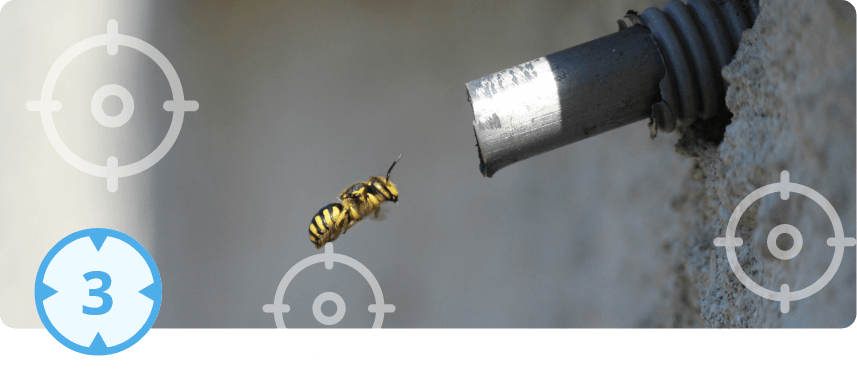
A clear flight path
Wasps flying to and from a small hole in your property or a hole in the ground is one of the best indicators of a nest. You would usually see several wasps a minute coming and going.
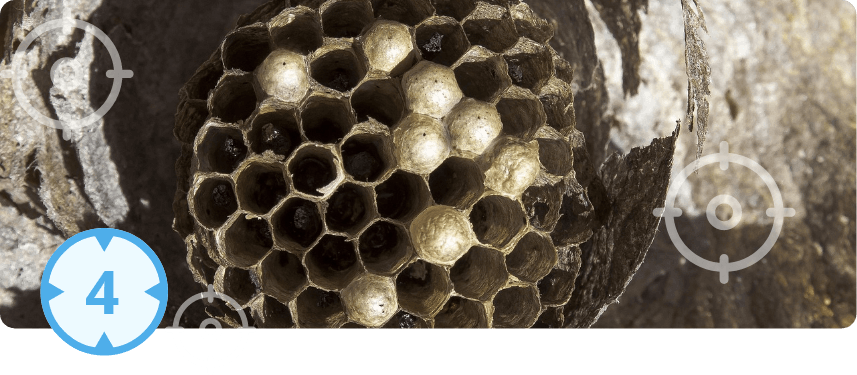
Noticing a wasps nest
Wasps are clever enough to hide their nests in walls or hidden areas in lofts. But if you catch sight of wasps coming and going from your property, you may be able to track them back to their nest. Towards the end of summer is when the nests are at their largest so may be easiest to spot at that time of year.
What attracts them?
Wasps come inside because they are looking for:
- A food source
- A nesting site
- Regularly clean up pet food and bird seed debris, and store pet food in sturdy containers with sealed lids, ideally elevated from ground level.
- A protected place to hibernate
- Accident or happenstance
- A water source
- Flowers
How to repel wasps
Wasps possess a very strong sense of smell, making certain fragrant plants effective natural repellents. Aromatic herbs like peppermint, citronella, and eucalyptus can help deter wasps from your home. Additionally, cucumber peels, with their bitterness, can also repel wasps. However, while these natural methods can help reduce wasp activity, they may not provide a permanent solution. For effective removal of wasps, it is advisable to contact our expert technicians.
No job is too large or too small, so please contact us today for a no-obligation quotation.
Frequently Asked Questions
What can I do to stop my wasp problem from recurring?
One way to prevent wasps is to make sure that all rubbish and sticky food is placed in bins with secure lids to stop wasps flying in and out. Wasp traps are another preventative measure.
Can I get rid of a wasp problem myself?
You should never attempt to move an active wasp nest yourself. Each wasp’s nest colony has its own personality, with some being more aggressive than others. If a nest feels threatened in any way, sentries will set-off an ‘attack’ pheromone.
This is a chemical released into the air that commands all wasps to attack anything nearby that could be a threat. When an attack pheromone has been released, wasps have been known to chase their victims for some distance.
Do wasps sting?
Only the female wasp’s sting, which they do use a tube which is connected to a sac which pumps venom into the victim. Unlike bees, one wasp can sting their victim several times. Wasps can also secrete distress chemicals when attacked to attract help from other wasps.
Will wasps go back to the same nests?
Wasps won’t return to the same nests. Although the worker wasps die, the queens will hibernate in safe, sheltered areas, such as buildings, and emerge to build a new nest, the following spring.
The average number of wasps in a nest can be vast. In the UK a mature colony could have up to 20,000 wasps. However, there is normally an average of 2,000 – 5,000 wasps per nest.
What should I do if I get stung?
For most people, stings won’t be a problem and can be treated at home. Make sure that the stinger, if detached, is removed from the wound. You can then apply a sting cream to reduce the itchiness/swelling and take an antihistamine tablet.
If you experience trouble breathing, swelling in the mouth, face or throat, increased heart rate, dizziness or difficulty swallowing, dial 999.
Call us for a quote on 01245 491 327 or Contact Us









